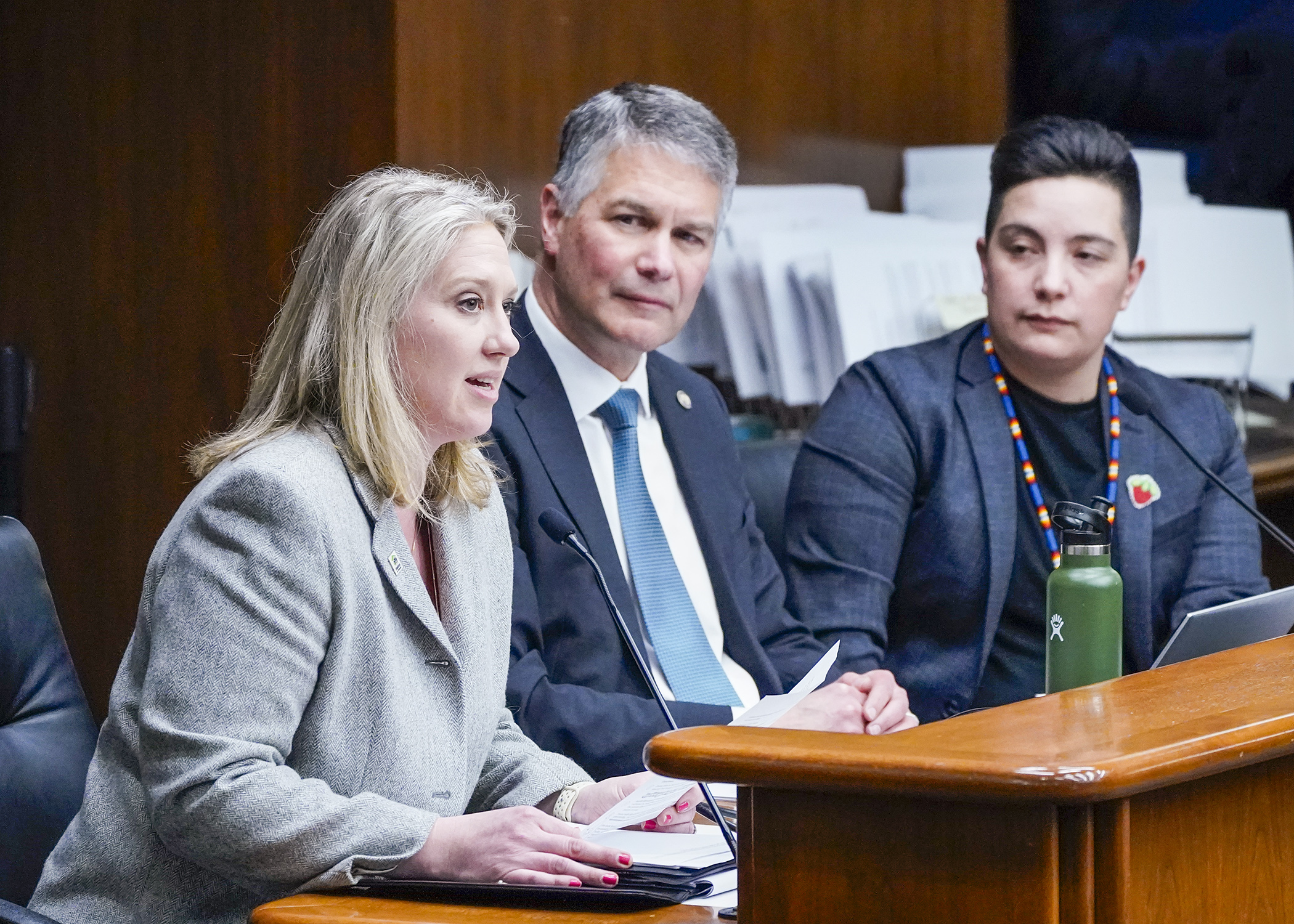Lawmakers seek solution to Minnesota’s affordable housing gap

Pausing frequently to catch her breath as she cried, Kormasah DeWard recalled how a few years ago she couldn’t find an apartment for less than $1,500.
“I spent much of my time living in my Jeep with my five children,” said DeWard, a member of SEIU Healthcare Minnesota and Iowa. “Sometimes we wouldn’t have enough money for food. The worst part of it was watching my children struggle through school. They didn’t have stable housing and I felt like a failure as a parent.”
She was one of 25 individuals telling the House Housing Finance and Policy Committee that HF4009 would either cripple the authority of Minnesota cities or help close the affordable housing gap.
The bill would require cities of a certain population to allow more types of housing within their jurisdiction and at greater densities by authorizing “middle housing types,” specifically duplexes, buildings of up to six units, townhouses, courtyard “clusters” and cottage housing. It would also limit parking requirements and aesthetic mandates for newly constructed middle housing types.
Approved, as amended, by the committee, it was sent to the House State and Local Government Finance and Policy Committee.
“This American dream is increasingly out of reach,” said Rep. Larry Kraft (DFL-St. Louis Park), the bill sponsor. “In every metro and regional center in the state, every one, the median income can’t afford a median-priced single-family home. Just let that sink in. More than 600,000 Minnesotans are paying more than 30% of their incomes on housing costs and Minnesota has one of the worst racial home ownership gaps in the country.”
But a one-size-fits-all is not the answer, some say.
Daniel Lightfoot, intergovernmental relations representative and federal relations manager with the League of Minnesota Cities, said the bill “broadly pre-empts city zoning and land use authorities, removes public testimony in the residential development process, and lacks consideration generally for how cities utilize zoning and land use to ensure public safety, health, and welfare.”
Numerous members of the committee and individuals testifying stated that the state needs 100,000 dwelling units to close the housing gap.
Related Articles
Search Session Daily
Advanced Search OptionsPriority Dailies
Speaker Emerita Melissa Hortman, husband killed in attack
By HPIS Staff House Speaker Emerita Melissa Hortman (DFL-Brooklyn Park) and her husband, Mark, were fatally shot in their home early Saturday morning.
Gov. Tim Walz announced the news dur...
House Speaker Emerita Melissa Hortman (DFL-Brooklyn Park) and her husband, Mark, were fatally shot in their home early Saturday morning.
Gov. Tim Walz announced the news dur...
Lawmakers deliver budget bills to governor's desk in one-day special session
By Mike Cook About that talk of needing all 21 hours left in a legislative day to complete a special session?
House members were more than up to the challenge Monday. Beginning at 10 a.m...
About that talk of needing all 21 hours left in a legislative day to complete a special session?
House members were more than up to the challenge Monday. Beginning at 10 a.m...